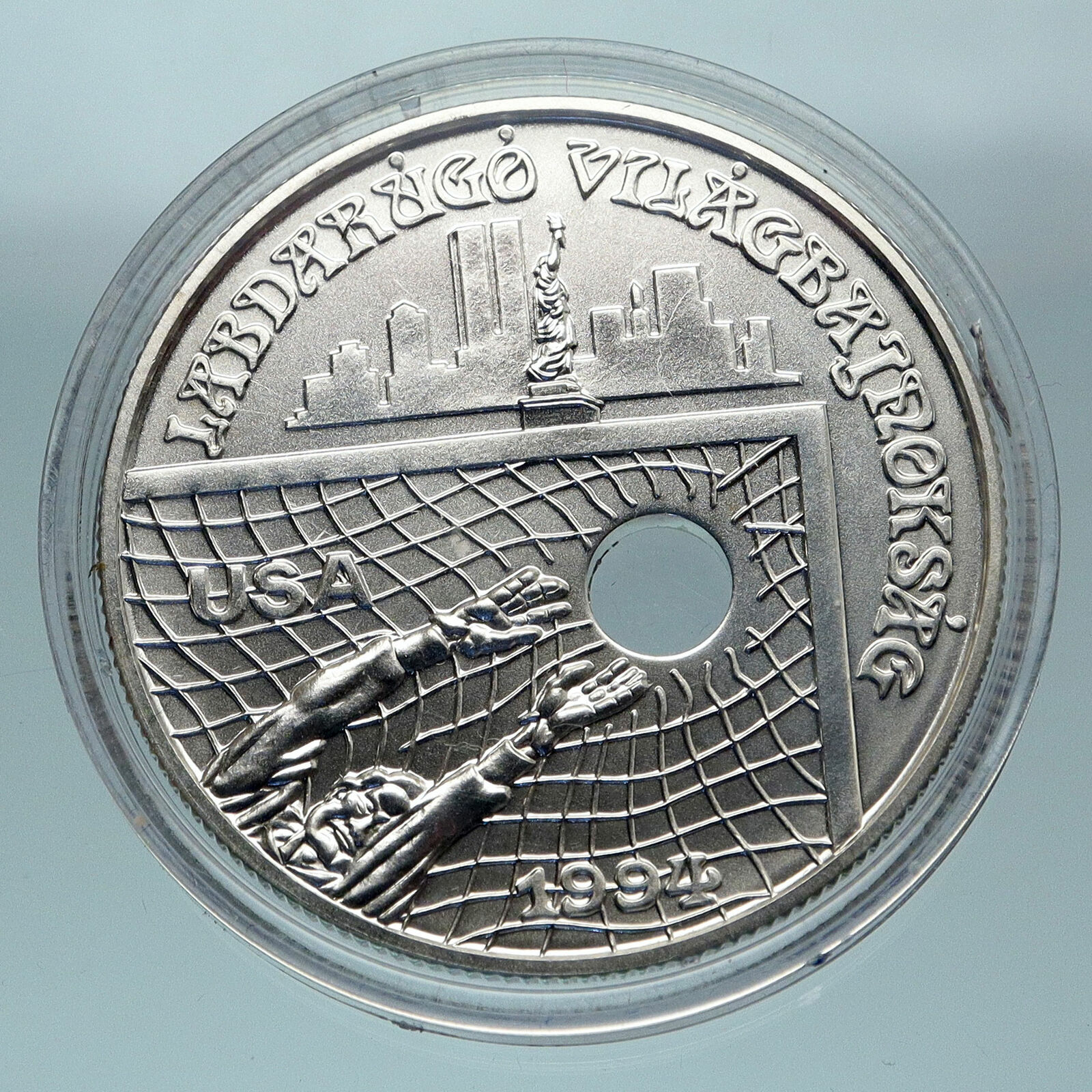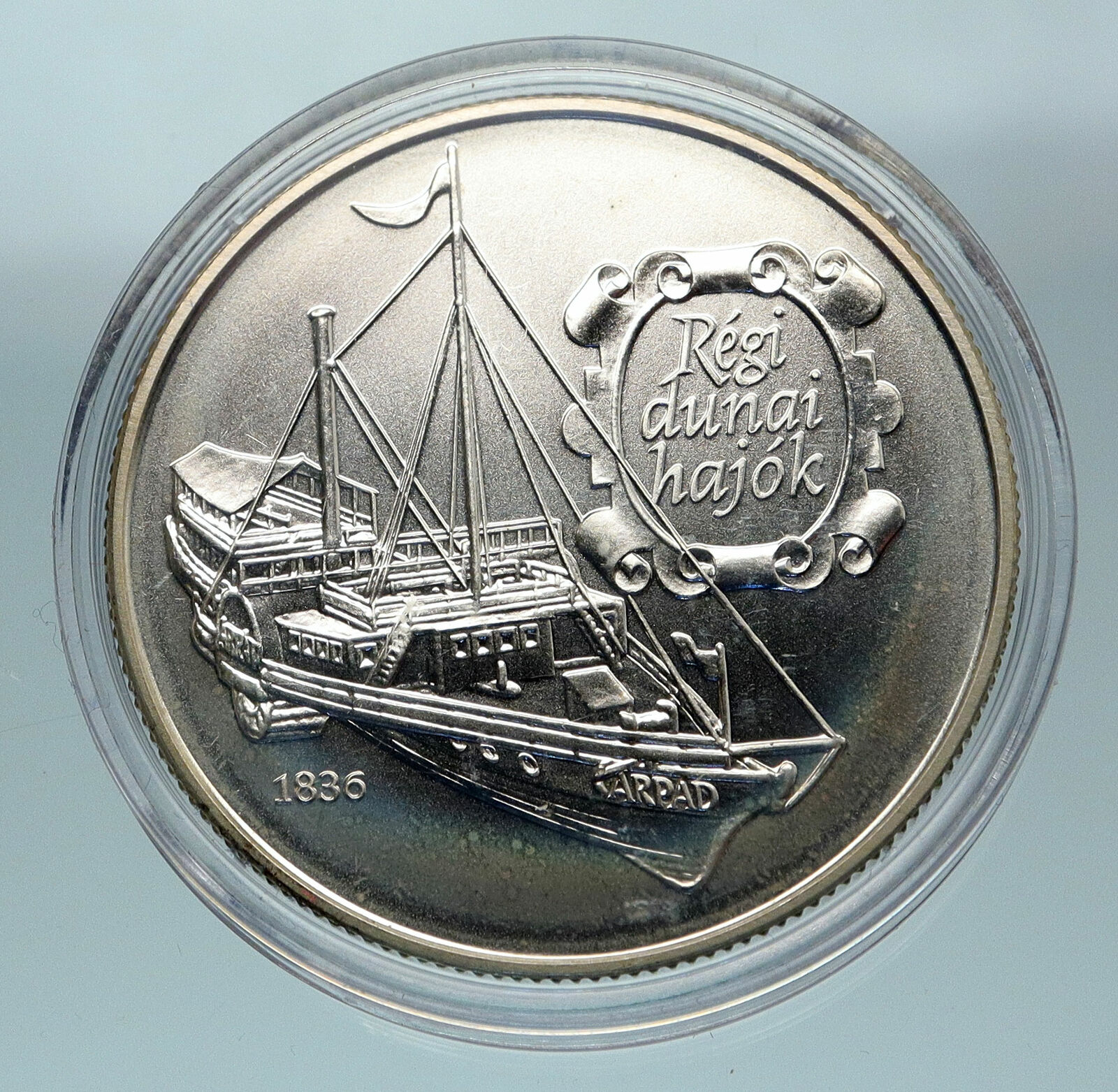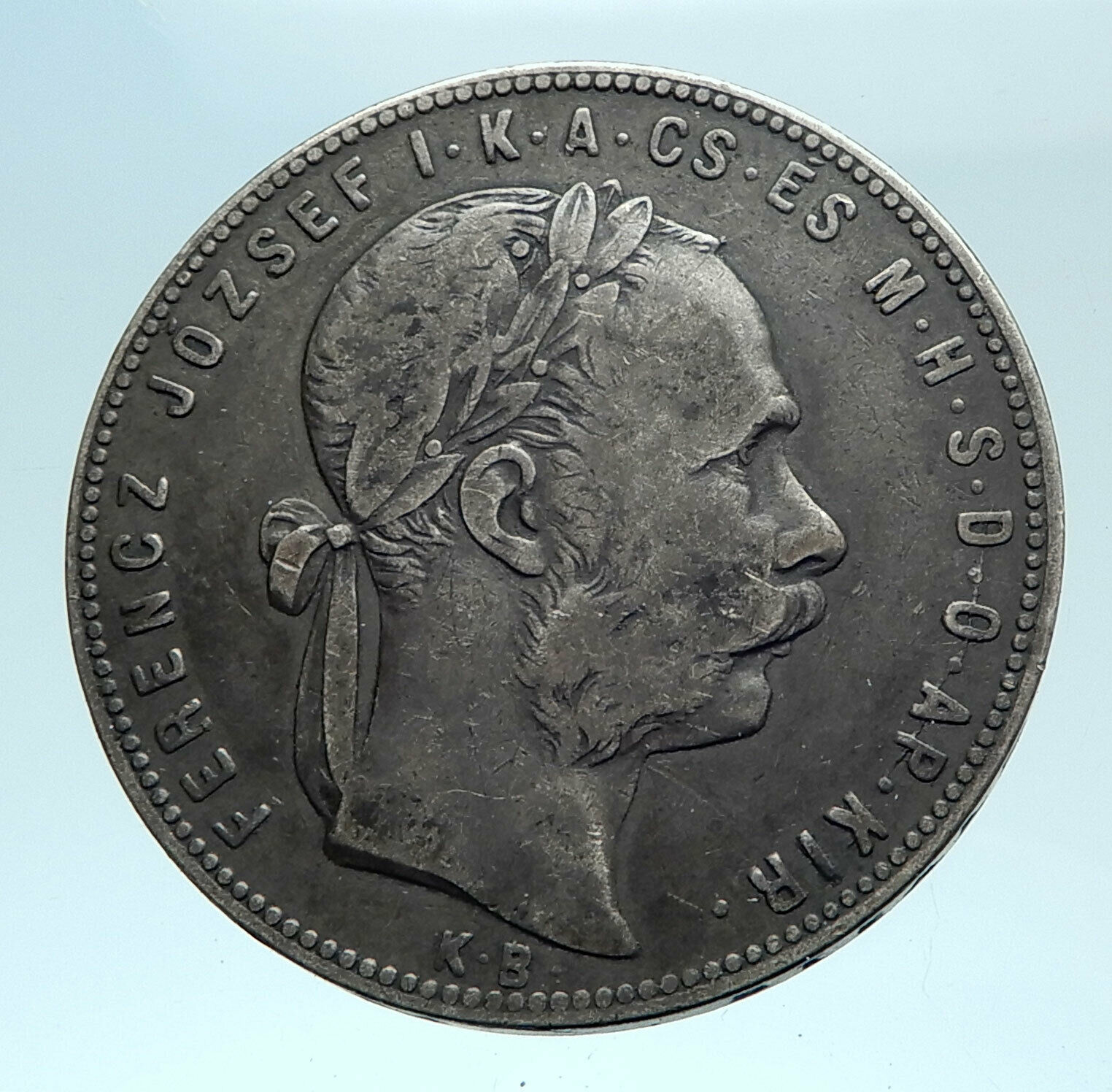|
Hungary under Franz Joseph I – King: 2 December 1848 – 21 November 1916
1914 KB Silver Corona 23mm (5.01 grams) 0.835 Silver (0.1342 oz. ASW)
Reference: KM# 492 (1912-16)
FERENCZ JÓZSEF I·K·A·CS· ÉS M·H·S·D·O·AP·KIR·, Laureate head, right.
1 KORONA, The Hungarian crown above the value; wreath.
Edge Lettering:
BIZALMAM AZ ŐSI ERÉNYBEN
You are bidding on the exact item pictured, provided with a Certificate of Authenticity and Lifetime Guarantee of Authenticity.
 Franz Joseph I or Francis Joseph I (German: Franz Josef I., Hungarian: I. Ferenc József, Croatian: Franjo Josip I., Czech: František Josef I., Italian: Francesco Giuseppe; 18 August 1830 – 21 November 1916) was Emperor of Austria, and King of Hungary, Croatia and Bohemia. Franz Joseph I or Francis Joseph I (German: Franz Josef I., Hungarian: I. Ferenc József, Croatian: Franjo Josip I., Czech: František Josef I., Italian: Francesco Giuseppe; 18 August 1830 – 21 November 1916) was Emperor of Austria, and King of Hungary, Croatia and Bohemia.
In December 1848, Emperor Ferdinand abdicated the throne at Olomouc as part of Ministerpräsident Felix zu Schwarzenberg’s plan to end the Revolutions of 1848 in Austria. This allowed Ferdinand’s nephew Franz Joseph to accede to the throne. Largely considered to be a reactionary, Franz Joseph spent his early reign resisting constitutionalism in his domains. The Austrian Empire was forced to cede its influence over Tuscany and most of its claim to Lombardy-Venetia to the Kingdom of Piedmont-Sardinia, following the Second Italian War of Independence in 1859 and the Third Italian War of Independence in 1866. Although Franz Joseph ceded no territory to the Kingdom of Prussia after the Austrian defeat in the Austro-Prussian War, the Peace of Prague (23 August 1866) settled the German question in favour of Prussia, which prevented the unification of Germany under the House of Habsburg (Großdeutsche Lösung).
Franz Joseph was troubled by nationalism during his entire reign. He concluded the Ausgleich of 1867, which granted greater autonomy to Hungary, hence transforming the Austrian Empire into the Austro-Hungarian Empire under his dual monarchy. His domains were then ruled peacefully for the next 45 years, although Franz Joseph personally suffered the tragedies of the execution of his brother, Maximilian in 1867, the suicide of his son, Crown Prince Rudolf in 1889, and the assassination of his wife, Empress Elisabeth in 1898.
After the Austro-Prussian War, Austria-Hungary turned its attention to the Balkans, which was a hotspot of international tension due to conflicting interests with the Russian Empire. The Bosnian crisis was a result of Franz Joseph’s annexation of Bosnia and Herzegovina in 1908, which had been occupied by his troops since the Congress of Berlin (1878). On 28 June 1914, the assassination of his nephew Archduke Franz Ferdinand in Sarajevo resulted in Austria-Hungary’s declaration of war against the Kingdom of Serbia, which was Russia’s ally. This activated a system of alliances which resulted in World War I.
Franz Joseph died on 21 November 1916, after ruling his domains for almost 68 years. He was succeeded by his grandnephew Charles. He was the longest-reigning Emperor of Austria and the third longest-reigning monarch of any major country in European history, after Louis XIV of France and Johann II of Liechtenstein.

 Hungary is a sovereign state in Europe. It is situated in the Carpathian Basin and is bordered by Slovakia to the north, Romania to the east, Serbia to the south, Croatia to the southwest, Slovenia to the west, Austria to the northwest, and Ukraine to the northeast. The country’s capital and largest city is Budapest. Hungary is a member of the European Union, NATO, the OECD, the Visegrád Group, and the Schengen Area. The official language is Hungarian, which is the most widely spoken non-Indo-European language in Europe. Hungary is a sovereign state in Europe. It is situated in the Carpathian Basin and is bordered by Slovakia to the north, Romania to the east, Serbia to the south, Croatia to the southwest, Slovenia to the west, Austria to the northwest, and Ukraine to the northeast. The country’s capital and largest city is Budapest. Hungary is a member of the European Union, NATO, the OECD, the Visegrád Group, and the Schengen Area. The official language is Hungarian, which is the most widely spoken non-Indo-European language in Europe.
 Following centuries of successive habitation by Celts, Romans, Huns, Slavs, Gepids, and Avars, the foundation of Hungary was laid in the late 9th century by the Hungarian grand prince Árpád in the Honfoglalás (“homeland-conquest”). His great-grandson Stephen I ascended to the throne in 1000 CE, converting the country to a Christian kingdom. By the 12th century, Hungary became a middle power within the Western world, reaching a golden age by the 15th century. Following the Battle of Mohács in 1526 and about 150 years of partial Ottoman occupation (1541-1699), Hungary came under Habsburg rule, and later formed a significant part of the Austro-Hungarian Empire (1867-1918). Following centuries of successive habitation by Celts, Romans, Huns, Slavs, Gepids, and Avars, the foundation of Hungary was laid in the late 9th century by the Hungarian grand prince Árpád in the Honfoglalás (“homeland-conquest”). His great-grandson Stephen I ascended to the throne in 1000 CE, converting the country to a Christian kingdom. By the 12th century, Hungary became a middle power within the Western world, reaching a golden age by the 15th century. Following the Battle of Mohács in 1526 and about 150 years of partial Ottoman occupation (1541-1699), Hungary came under Habsburg rule, and later formed a significant part of the Austro-Hungarian Empire (1867-1918).
Hungary’s current borders were first established by the Treaty of Trianon (1920) after World War I, when the country lost 71% of its territory, 58% of its population, and 32% of ethnic Hungarians. Following the interwar period, Hungary joined the Axis Powers in World War II, suffering significant damage and casualties. Hungary came under the influence of the Soviet Union, which contributed to the establishment of a four-decade-long communist dictatorship (1947-1989). The country gained widespread international attention regarding the Revolution of 1956 and the seminal opening of its previously-restricted border with Austria in 1989, which accelerated the collapse of the Eastern Bloc.
On 23 October 1989, Hungary again became a democratic parliamentary republic, and today has a high-income economy with a very high Human Development Index. Hungary is a popular tourist destination attracting 10.675 million tourists a year (2013). It is home to the largest thermal water cave system and the second-largest thermal lake in the world (Lake Hévíz), the largest lake in Central Europe (Lake Balaton), and the largest natural grasslands in Europe (the Hortobágy National Park).
|





 Franz Joseph I or Francis Joseph I (German: Franz Josef I., Hungarian: I. Ferenc József, Croatian: Franjo Josip I., Czech: František Josef I., Italian: Francesco Giuseppe; 18 August 1830 – 21 November 1916) was Emperor of Austria, and King of Hungary, Croatia and Bohemia.
Franz Joseph I or Francis Joseph I (German: Franz Josef I., Hungarian: I. Ferenc József, Croatian: Franjo Josip I., Czech: František Josef I., Italian: Francesco Giuseppe; 18 August 1830 – 21 November 1916) was Emperor of Austria, and King of Hungary, Croatia and Bohemia.
 Hungary is a sovereign state in Europe. It is situated in the Carpathian Basin and is bordered by Slovakia to the north, Romania to the east, Serbia to the south, Croatia to the southwest, Slovenia to the west, Austria to the northwest, and Ukraine to the northeast. The country’s capital and largest city is Budapest. Hungary is a member of the European Union, NATO, the OECD, the Visegrád Group, and the Schengen Area. The official language is Hungarian, which is the most widely spoken non-Indo-European language in Europe.
Hungary is a sovereign state in Europe. It is situated in the Carpathian Basin and is bordered by Slovakia to the north, Romania to the east, Serbia to the south, Croatia to the southwest, Slovenia to the west, Austria to the northwest, and Ukraine to the northeast. The country’s capital and largest city is Budapest. Hungary is a member of the European Union, NATO, the OECD, the Visegrád Group, and the Schengen Area. The official language is Hungarian, which is the most widely spoken non-Indo-European language in Europe. Following centuries of successive habitation by Celts, Romans, Huns, Slavs, Gepids, and Avars, the foundation of Hungary was laid in the late 9th century by the Hungarian grand prince Árpád in the Honfoglalás (“homeland-conquest”). His great-grandson Stephen I ascended to the throne in 1000 CE, converting the country to a Christian kingdom. By the 12th century, Hungary became a middle power within the Western world, reaching a golden age by the 15th century. Following the Battle of Mohács in 1526 and about 150 years of partial Ottoman occupation (1541-1699), Hungary came under Habsburg rule, and later formed a significant part of the Austro-Hungarian Empire (1867-1918).
Following centuries of successive habitation by Celts, Romans, Huns, Slavs, Gepids, and Avars, the foundation of Hungary was laid in the late 9th century by the Hungarian grand prince Árpád in the Honfoglalás (“homeland-conquest”). His great-grandson Stephen I ascended to the throne in 1000 CE, converting the country to a Christian kingdom. By the 12th century, Hungary became a middle power within the Western world, reaching a golden age by the 15th century. Following the Battle of Mohács in 1526 and about 150 years of partial Ottoman occupation (1541-1699), Hungary came under Habsburg rule, and later formed a significant part of the Austro-Hungarian Empire (1867-1918).




